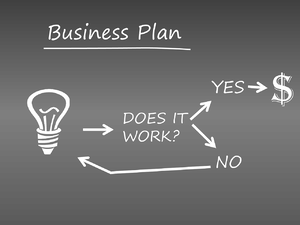The business world is changing faster than ever. To stay ahead of the curve, you need to build your business from the ground up. You can’t just start selling products or services and hope that they’ll take off on their own. Instead, it would be best if you had a solid business plan to get you started and keep you growing for years to come. Fortunately, building your business is easier than it used to be thanks to online resources like Google and Facebook. Today, anyone with an idea and a computer can launch their own digital storefront with just a few clicks. Whether they’ve got experience in design or not, everyone has access to digital tools that make starting a business as easy as possible right now.
1. What is a Business Plan?
A business plan is a comprehensive outline of your company’s mission, how you plan to achieve it, and your financials. You’ll use this plan to convince potential investors or partners to back or partner with your company. It’s also a great way to organize your thoughts and tell your story.
2. Create a Roadmap for Your Business
Riding off the success of your digital storefront won’t be enough to build a successful business. Any venture will be plagued by hiccups and difficulties, and you need a roadmap to navigate them. While building your business plan, think about what challenges lie ahead. Then, map out a strategy for overcoming them.
3. Conduct Market Research
No matter what business you’re in, you need to know who you’re selling to. Knowing your customers and their needs is the only way to create products and services that people want to buy. Before building your company’s products, you need to find out who your target customers are. This is where your market research comes in.
4. Decide on a Revenue Model
There are plenty of ways to generate revenue as a business owner. The most popular include selling subscriptions, offering consulting services, and selling goods. You’ll want to choose one revenue model and stick to it. If you try to mix things up, later on, you’ll confuse your customers and lose revenue.
5. Finalize Your Costs and Revenue Estimates
Every business is different, and you’ll have to estimate your costs and revenue based on your specific business model. Some businesses require more overhead than others, depending on the complexity of the products or services you offer. Once you’ve got a rough estimate of your costs and revenue, you can finish your business plan.
6. Summarize Your Findings
Your business plan will summarize your findings and conclusions from your market research, revenue estimations, and cost estimates. From there, you’ll create a roadmap for achieving the financial goals you’ve set. You can use your business plan to detail your growth strategy and track your progress.
Takeaways
Building your business from the ground up takes a lot of hard work, but it’s also incredibly rewarding. Once you’ve got your foundation in place, you can focus on growing your customer base and expanding your product line.





